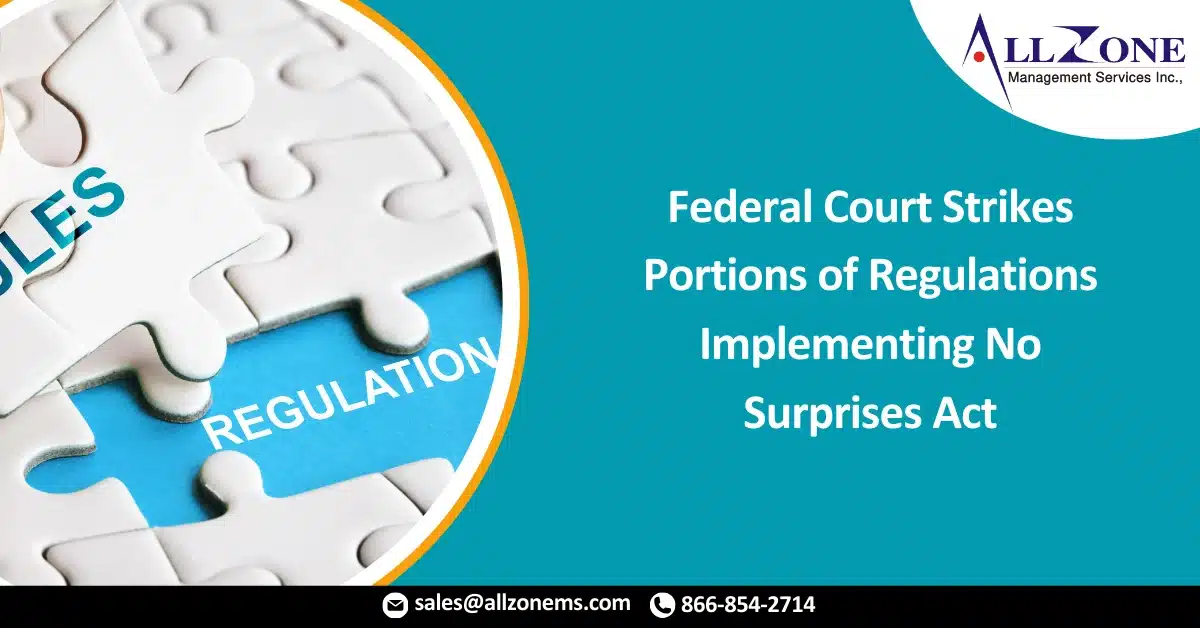On Wednesday, February 23, 2022, a federal court in Texas struck down five controversial portions of the interim final rule (“Rule”) jointly issued by three federal executive agencies (“Departments”) that implement the independent dispute resolution (“IDR”) process of the No Surprises Act (“NSA”). The portions of the Rule at issue set forth certain parameters for how the neutral (“IDR entity”) determines during the IDR process the appropriate rates for out-of-network (“OON”) health care services subject to the NSA. The court found these portions of the Rule conflict with the NSA and must be stricken and removed from the Rule. The decision was issued in Texas Medical Association, et al. v. United States Department of Health and Human Services, et al., No. 6:21-cv-425-JDK, slip op. (E.D. Tex. Feb. 23, 2022), linked here, which is one of several lawsuits pending around the country challenging the interim final rule. The court’s decision applies nationwide and not just to the named Plaintiffs in the case.
Congress declared in the NSA that the IDR entity “shall” consider five specified “circumstances” as well as any relevant information submitted by either party when determining an appropriate OON rate. Congress chose not to impose any more or less weight to any of these factors. However, under the Rule as drafted, the Departments required the IDR entity to apply a “rebuttable presumption” that the “appropriate” OON rate is the plan’s “QPA” (generally speaking, the plan’s median in-network rate). Relying on Supreme Court precedent, the court noted that “an agency may not rewrite clear statutory terms to suit its own sense of how the statute should operate.’” Tex. Med’l Ass’n, slip op. at 19 (quoting Util. Air Regul. Grp. v. EPA, 573 U.S. 302, 328 (2014)). And the court found this is exactly what the Departments tried to do with these portions of the Rule.
The court also determined Plaintiffs likely would have suffered financial harm if the Rule was implemented as drafted because Plaintiffs demonstrated “injuries fairly traceable to the Rule”. Id. at 9–10. The improper presumption in favor of the QPA would have led to lower OON reimbursement compared to a process without this presumption because the IDR entity would have been required to give less weight to the factors that justify higher reimbursement for OON services like different market rates, higher costs, and differences in patient and case complexity. As a result, the court agreed with Plaintiffs’ arguments that providers would be harmed by the Rule because it “puts a substantial thumb on the scale in favor of the QPA” and “will pressure health care providers to lower their offers” during disputes over OON reimbursement toward the plan’s QPA. Id. at 9.
The court also found that the Departments improperly and without justification bypassed the required “notice and comment” process under the Administrative Procedure Act when issuing the Rule. According to the court, this decision deprived health care providers the opportunity to explain why the Rule was inconsistent with the NSA, how the Rule would negatively impact providers, and how the agencies could draft a rule consistent with the NSA’s text. However, the court decided to strike down the improper portions of the Rule rather than remanding to the Departments for further consideration because “there is nothing the Departments can do on remand to rehabilitate or justify the challenged portions of the Rule as written.” Id. at 32. The court did not disturb the remaining provisions of the Rule, finding they “provide a sufficient framework for providers and insurers to resolve payment disputes . . . without having their hands tied by the Department’s QPA presumption.” Id. at 33.
For More Information: https://www.allzonems.com/regulations-implementing-no-surprises-act/

